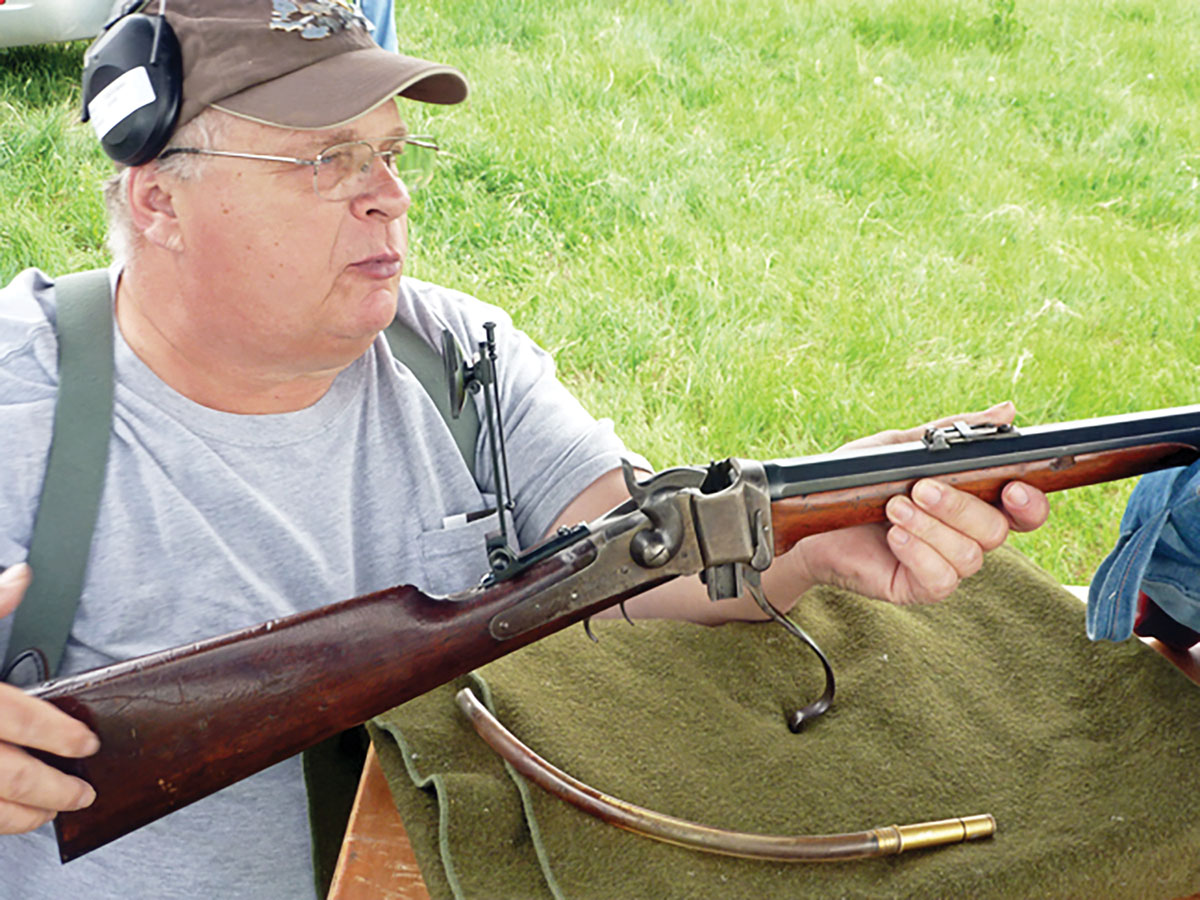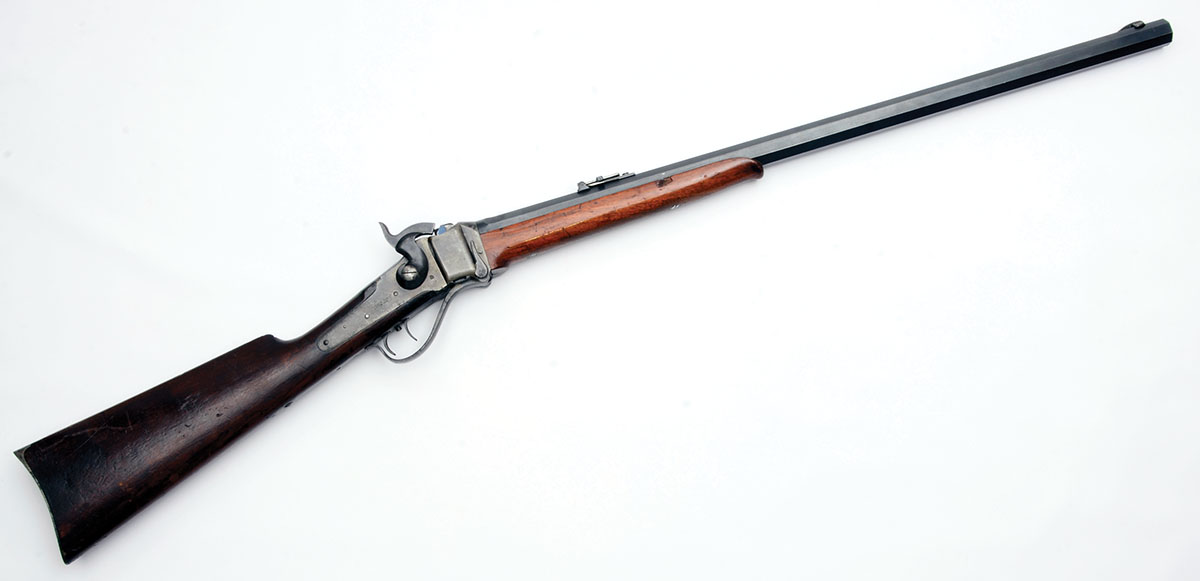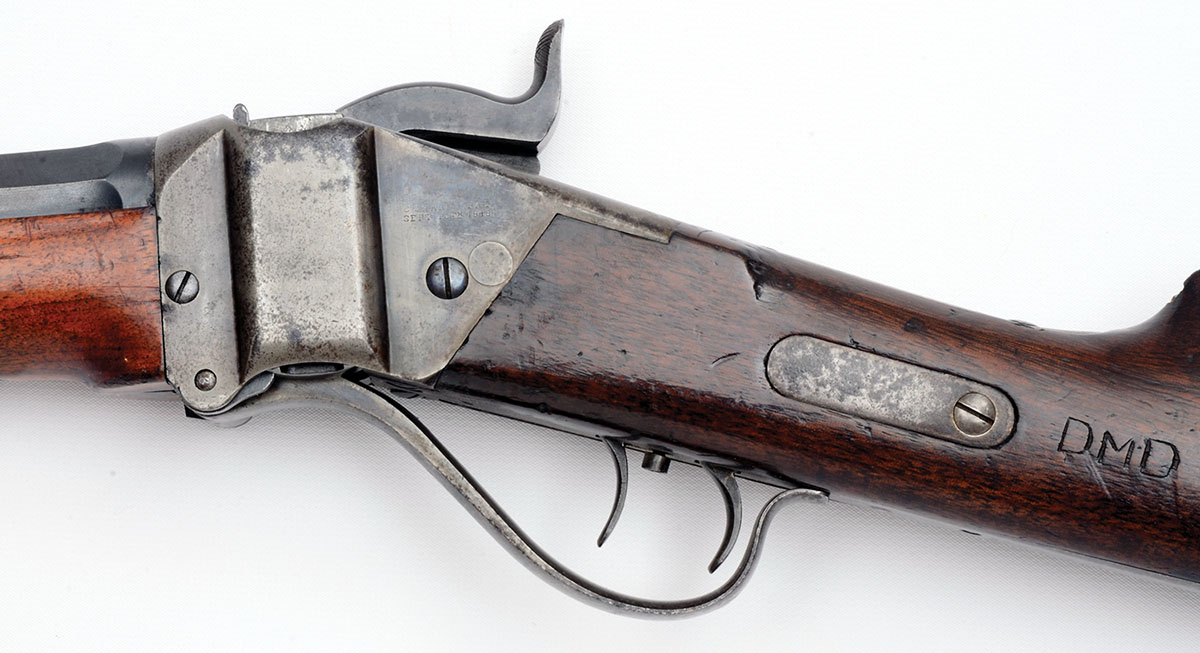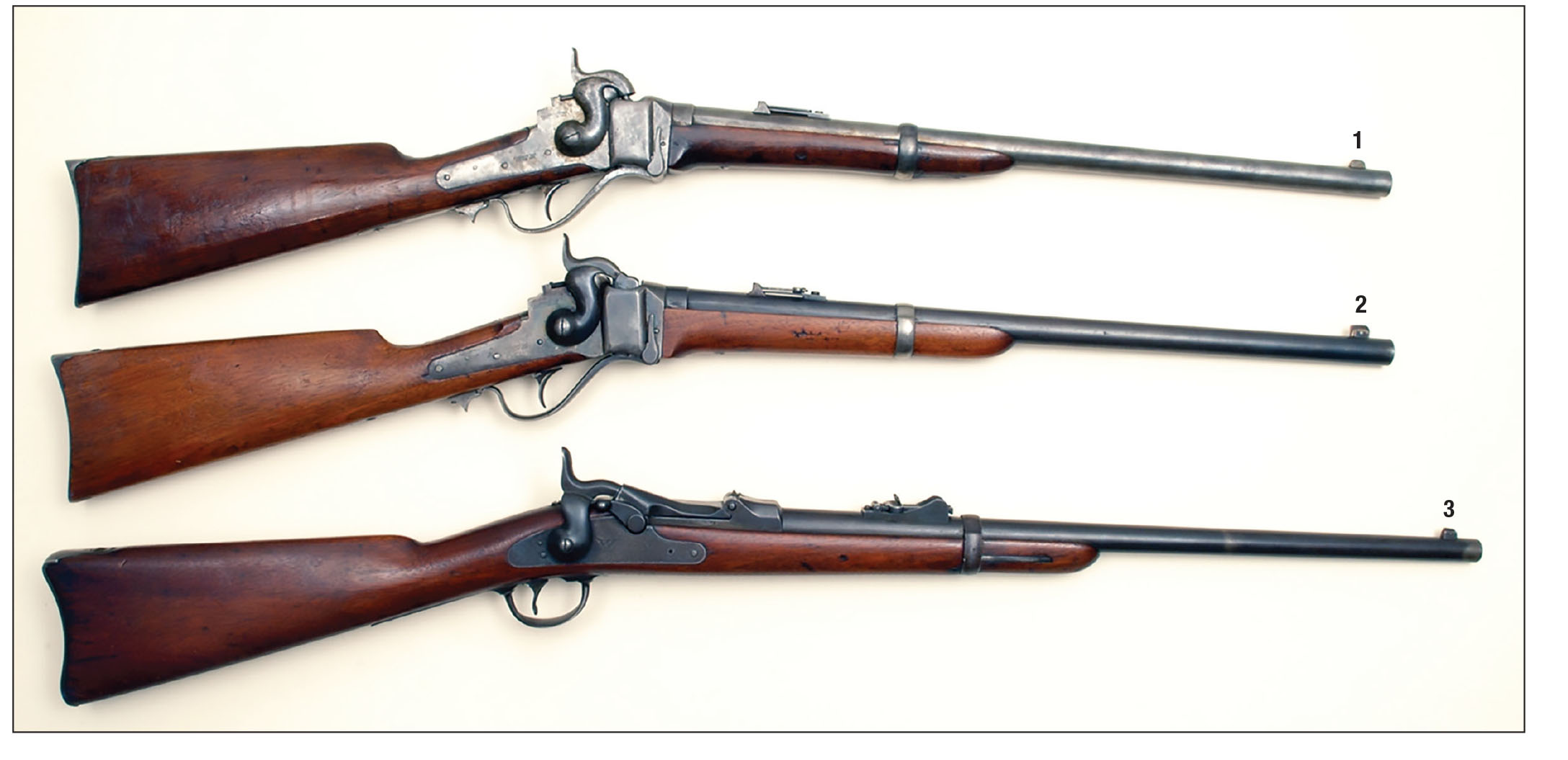Down Range
Sharps Conversions
column By: Mike Venturino - Photos by Yvonne Venturino | January, 24

Long ago, a friend called asking if he could drop by with a new acquisition – a Sharps rifle. Nowadays, most shooters are aware of Sharps rifles because their reproductions are being made by two companies here in Montana and at least one in Italy. For the most part, these Sharps are copies of the original Model 1874s produced in the 1870s.
My friend’s Sharps rifle wasn’t a replica. It was actually made by the Sharps Rifle Company in the 1870s and was in surprisingly good condition considering its 120-year age. Furthermore, it was chambered for 45-70 Gov’t, which is always a plus. We shot it during his visit and I was amazed at its 100-yard groups. At this late date, I don’t remember what handloads we fired, but I do remember that clusters were within 2 inches. I coveted that rifle and told my friend so. It was disappointing to hear him reply that another gent had first dibs on it. I strongly requested that he pass on to that fellow that my interest in it was strong. In the summer of 1991, a call came saying that the owner was willing to part with it. I was more than willing to buy it.

Back to the day I first saw the rifle in question. After examining and shooting it, my friend said, “Notice anything different about it?” I said, “Well it has only a 28-inch barrel instead of the usual 30-inch ones.” Otherwise, I took it for an ordinary Sharps Model 1874 i.e. falling block, single-shot, octagonal barrel, with double-set triggers, Schnabel forearm, a slightly curved steel buttplate and plain grain walnut for wood.
To my surprise, he informed me that this wasn’t actually a Model 1874. It was a Sharps factory conversion of their earlier Models 1859 and 1863 percussion carbines. He showed me that this rifle’s lockplate was much thicker than a standard Model 1874. Also, he pointed out that buttstock and forearm did not match with the former piece of wood being darker than the latter.

However, the dead giveaway was on the rifle’s left side, behind the receiver. There, inlaid into the wood, was an oblong piece of steel and a few inches ahead of it was a filled round hole in the receiver where something obviously had been removed. That had been where the sling bar resided. Sling bars were put on cavalry carbines so troopers could attach wide leather slings to them. Slings looped over trooper’s heads to rest on their left shoulders making their carbines dangle on their right sides. That way, if the soldier was unhorsed in combat he wouldn’t be unarmed. (Having been unhorsed many times in my younger years, I can only imagine how landing on a carbine would hurt!)
Being a fan of all things Sharps, I knew of converted percussion carbines in the years after the Civil War. At the time metallic cartridges became the norm, the U.S. War Department owned about 50,000 of those now-obsolete carbines. Sharps engineers had worked out a method to convert percussion rifles and carbines to metallic cartridges so a deal was made. More than 30,000 Models 1859 and 1863s were shipped to the Sharps factory in Connecticut, some even loosely tossed into boxcars. These were all chambered for 50 Gov’t (50-70) and intended for military service. The famous 7th Cavalry had many but turned them in after receiving their brand new Model 1873 45 Gov’t carbines, which they carried to the famous Battle of the Little Bighorn. Later, the converted 50-70s were sold as surplus to civilians and some even given to Indians living on reservations for hunting purposes. Modern archaeology has proven at least 28 of those Sharps 50-70 Gov’t carbines were used against the 7th Cavalry during the Little Bighorn Battle.
Here’s an interesting fact. When the Sharps factory received those Models 1859 and 1863 carbines, they were instructed by Springfield Armory thusly. If their six groove barrels measured less than .5225 inch across their grooves, they were to be left as is. If those barrels measured over that figure, they were to be relined with three groove barrels with nominal groove diameters of .515 inch. Formerly, I owned a Model 1863 carbine. Its barrel slugged at exactly .530 inch. Also, in the past, I owned a converted 50-70 carbine with .515-inch liner. It shot well, considering its sights.

Sharps factory conversions of percussion carbines into virtually near identical Model 1874 sporting rifles was new to me and the place to research was Frank Sellers’ book Sharps Firearms. What I learned was that conversions of those plentiful carbines into metallic cartridge firing sporting rifles were done by several enterprises such as Schuyler, Harley & Graham of New York City, F.C. Meacham of St. Louis, and F.W. Freund of Cheyenne, Wyoming. Add to the list the actual Sharps Rifle Company of Bridgeport, Connecticut.
Sporting rifle conversions by the Sharps factory used Model 1874 breechblocks, double-set triggers, and newly manufactured octagonal barrels. Only two chamberings were available: 45 Gov’t (45-70) and 40-2¼ (40-70 Bottleneck). Oddly, the open rear sight was not the same as the Model 1874s, instead, they were the same type of rear sights found on the carbines. The buttstocks had straight grips, with buttplates being curved steel. The Sharps factory did not keep records of its Sharps “74” sporting rifle conversions, but Sellers’ wrote in his book that about 4,000 were made.
Here’s a quick story I love to relate. On my way to visit my friend Hank Williams Jr. at his ranch in Montana, I picked up my 45-70 conversion. With me was a box of handloads using Lyman bullet No. 457125 (520-grain RN) sized .459 inch and SPG lube. Under those bullets was 60 grains of GOEX FFFg black powder powered by Federal 215 Large Rifle Magnum primers. Later chronographing showed velocity averages at 1,200 feet per second (fps) give or take a bit. I also had a Vernier Long Range tang-mounted peep sight. Since my last visit to his ranch, he had installed a full-size steel silhouette of a bison and the distance was surveyed at 956 yards.
Shooting from a solid rest, some sighting shots were required to make the first hit on that near speck at 956 yards. Then I hit it five times running. The rifle was passed to Hank and he hit it five times running. It came back to me and I rang steel with it five more times. That is one accurate single-shot rifle! I’m notorious among my friends for selling off some great guns when something new caught my fancy. Not with my Sharps sporting rifle conversion. It’s still here.


